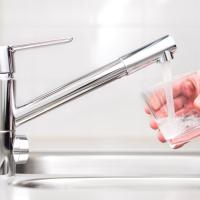Over time, private wells can become contaminated with bacteria. Shock chlorinating your well can help get rid of harmful bacteria and keep your water clean.
How do wells become contaminated with bacteria?
Conditions that increase the risk of bacterial presence are:
- Problems with well casings, such as casings that are rusted, unsealed casings or casings that do not extend above the ground by at least 30 cm
- Close proximity of well to a septic tank or field, a barn or feed lot
- Environmental conditions, such as flooding or heavy rains
- Possibility of surface contamination because of shallowness of the well or water permeable overlying soils
When should shock chlorination be done?
There are a variety of situations that may lead to your well needing shock chlorination:
- When a new well is installed
- When a well or pump service is performed
- When bacteriological tests indicate a problem
How to Shock Chlorinate a Well
- Thoroughly clean the well, removing all floating debris. Scrub material from the well casing.
- Pump the well until the water is clear.
- Store enough water to last the household for approximately 12 hours.
- Pump about 300 gallons (1200 liters) of water into a clean container located close to the well head. Allow the water to return to a non-pumping level in the well.
- Pour about 2 gallons (10 liters) of household bleach into the container and an additional 10 liters down the well, allowing the bleach to wash down as much of the inside well casing as possible.
- Rinse down the sides of the well casing with a garden hose for 5-10 minutes. This hose should be connected to the system being chlorinated. Let stand for one hour.
- Siphon or pour the water in the container into the well casing. Allow the well to return to its non-pumping level.
- Open all taps and hydrants on the system and allow them to run until the water at the outlets has a chlorine odor. Note that all water treatment equipment should be bypassed during this process. Loosened debris may plug the mechanical operation of this equipment. Also, shut off power to the hot water heater.
- Leave the chlorine solution in the system for at least 12 hours. Then, open an outside tap and allow the water to run to an area away from grass and shrubbery. Allow the water to run until you can no longer detect a chlorine odor.
- Run each of the household cold water taps until no chlorine odor is detectable.
- Drain the water heater, refill and turn the power back on.
- Resample the well for bacteriological testing no sooner than one week after the shock chlorination process



